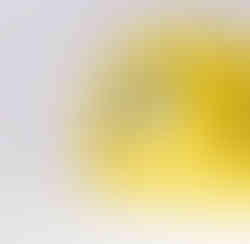Alocasia reginula 'Black Velvet' – Care Guide, Origins, and Styling Inspiration
Alocasia reginula 'Black Velvet' is a compact tropical houseplant prized for its stunning deep black leaves, accented by bold silver-white veins. Each velvety leaf feels almost suede-like to the touch and displays a striking matte finish. With its sculptural form and manageable size, 'Black Velvet' is ideal for terrariums, shelves, or as a bold standalone feature in any modern plant collection.
For anyone seeking a rare, easy-care statement piece with serious impact, Alocasia 'Black Velvet' is a must-have.
Origin and Background of Alocasia reginula 'Black Velvet'
- Native Habitat: Endemic to Sabah, Malaysian Borneo, where it grows on ultramafic rocky slopes under bright, filtered light.
- Introduction to Cultivation: Propagated commercially in the early 1990s by Scott Hyndman via plants obtained from the Lyon Arboretum, Hawaii.
- Scientific Recognition: Officially described by botanists A. Hay, P.C. Boyce, and K.M. Wong in 1997.
The species name "reginula" means "little queen," perfectly fitting for its regal appearance. It belongs to the group known as "jewel Alocasias," celebrated for their luxurious foliage and compact growth.
Care Instructions for Alocasia reginula 'Black Velvet'
→ Light
Provide bright, indirect light to mimic its native semi-exposed habitat. Morning sunlight is beneficial, but protect from harsh midday rays. Grow lights can help in darker spaces.
→ Watering
- Controlled Watering: Let the top 3–4 cm of soil dry before watering again.
- Use Soft Water: Filtered or rainwater helps prevent mineral buildup on the velvety leaves.
- Drainage Critical: Always use well-draining soil and pots with drainage holes to avoid soggy conditions.
→ Humidity
- Preferred Range: 60–70% humidity keeps growth optimal.
- Boost Methods: Group plants, use pebble trays, or set up a humidifier. Terrariums provide excellent stability.
→ Temperature
Ideal temperature range is 18–27°C. Avoid exposure to temperatures below 15°C, which can trigger stress and dormancy.
→ Best Soil and Repotting Tips
- Ideal Mix: Combine perlite, orchid bark, and coconut coir for excellent aeration and moisture control.
- Repotting: Repot only when roots outgrow the pot, typically every 2–3 years. Alocasia reginula dislikes frequent disturbance.
- Pot Choice: Terracotta improves airflow; plastic retains moisture longer — choose based on your environment.
→ Fertilization
- Light Feeding: Apply a diluted balanced fertilizer every 4–6 weeks. Avoid heavy feeding to protect sensitive roots and leaves.
→ Propagation
- Division: Separate offsets carefully during repotting. Each division should have roots and a growth point.
→ Semi-Hydroponics
Adaptable to semi-hydroponic setups using LECA if moisture levels are carefully controlled. Avoid over-saturation to prevent root rot.
→ Pruning
Remove any yellow, old, or damaged leaves with clean, sterilized tools to encourage healthy growth.
Common Issues and Solutions for Alocasia reginula 'Black Velvet'
→ Yellowing Leaves
- Cause: Overwatering or poor drainage.
- Solution: Let soil dry more between waterings and ensure adequate drainage.
→ Brown Leaf Edges
- Cause: Low humidity or inconsistent watering.
- Solution: Increase humidity and maintain consistent watering habits.
→ Drooping Leaves
- Cause: Water stress or sudden environmental changes.
- Solution: Adjust watering and stabilize temperature and humidity.
→ Pests
- Spider Mites: Treat early with neem oil and improve ambient humidity.
- Mealybugs: Remove with alcohol-soaked cotton or insecticidal soap spray.
→ Root Rot
- Cause: Waterlogged conditions.
- Solution: Trim rotted roots and repot into fresh, dry soil.
Why Alocasia 'Black Velvet' Should Be in Your Collection
- Space-Saving: Perfect for shelves, small rooms, and terrariums.
- Visual Impact: Dark, velvety leaves contrast beautifully with lighter foliage plants.
- Manageable Care: With stable conditions, this jewel Alocasia is relatively easy to maintain.
FAQs About Alocasia reginula 'Black Velvet'
- Is Alocasia 'Black Velvet' pet safe? No, it is toxic to pets and humans if ingested.
- Can it thrive under grow lights? Yes, full-spectrum LED grow lights are a good supplement if natural light is limited.
- Can it be grown in terrariums? Absolutely! Its compact size and humidity needs make it an ideal terrarium plant.
- How often should I fertilize? Light feeding every 4–6 weeks during active growth is sufficient.
Get Your Alocasia reginula 'Black Velvet' Now
Bring a slice of the tropics into your home with the elegant and dramatic Alocasia reginula 'Black Velvet'. Shop today and elevate your indoor jungle!
Alocasia reginula 'Black velvet'
Alocasia reginula 'Black velvet' comes in following sizes:
Plug (Starter Plant) – ⌀ 2 cm , is approximately 10 cm tall
Baby Plant – is approximately 13 cm tall and comes in a ⌀ 6 cm pot
S – is approximately 20 cm tall and comes in a ⌀ 12 cm pot
M – is approximately 25 cm tall and comes in a ⌀ 13 cm pot
L – is approximately 30 cm tall and comes in a ⌀ 14 cm pot

























































